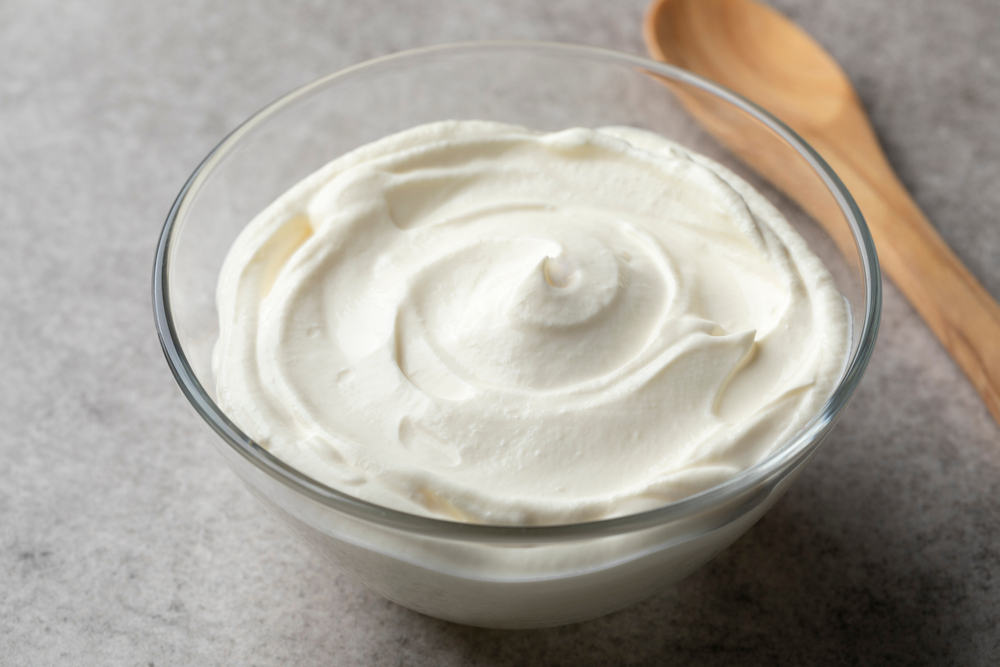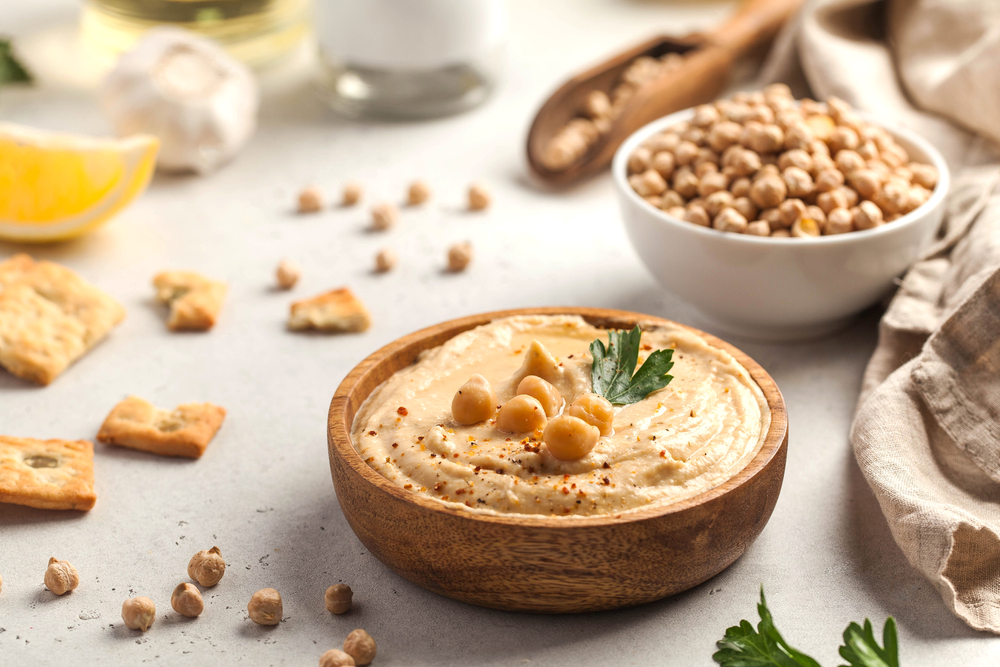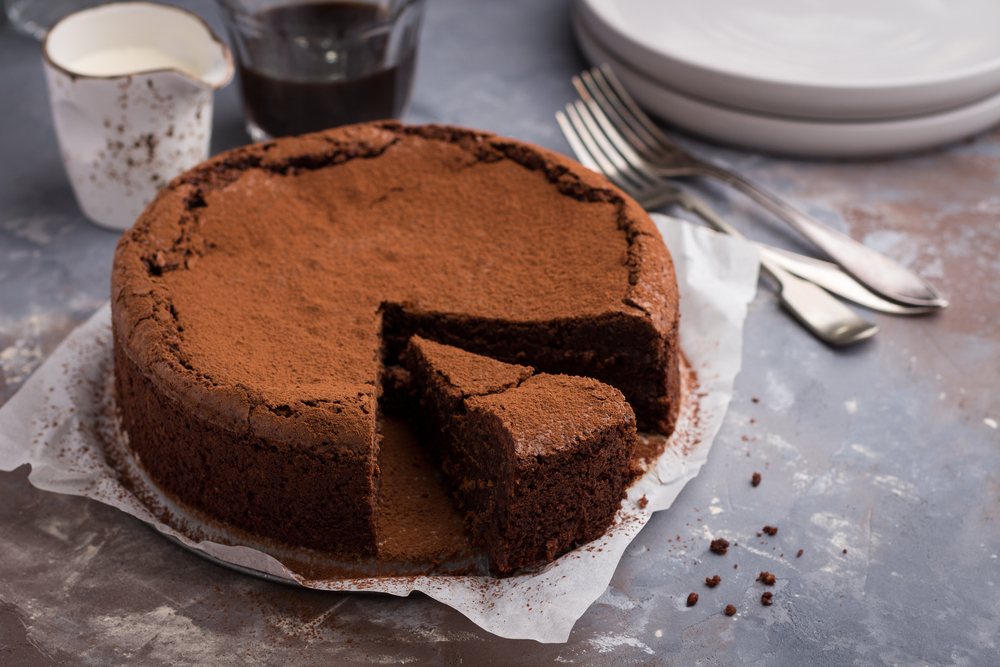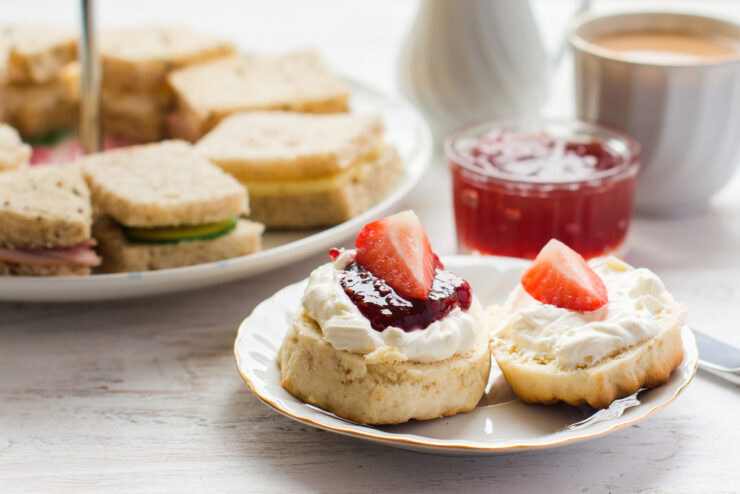It’s Afternoon Tea Week in the UK from the 7th to 13th August, celebrating one of our great British traditions. Few of us can resist a delicious afternoon tea, although with our busy, always-on lives, afternoon tea tends to be a thing of the past or a special treat. But does it need to contain lots of sugar and fat to be enjoyable?
Clinical Nutritionist Suzie Sawyer shares some food swaps for a healthier afternoon tea.
Swap double cream for crème fraiche

It’s fair to say that most afternoon tea tables contain a fair amount of double cream on one dish or another. And whilst any food is fine as an occasional treat, cream is fairly loaded with fat and calories. It can also be hard on the digestion for some of us which can lead to uncomfortable bloating eating.
Eating fat-laden meals is also hard on the liver as it has to produce more bile to break the fat down. Remember that everything we eat and drink has to go through the liver at some stage, so the more work we give it to do, the more sluggish it can become.
Cream is around 50% fat, whereas crème fraiche is around 30%. It’s still not a food to be eaten every day but it is certainly lighter on the stomach. Crème fraiche works really well with any sweet cakes; the contrast with sweet and slightly sour is really delicious. Scones never tasted so good, spread with strawberry jam and crème fraiche (whether you do it the Devonian or the Cornish way!)
Swap mayonnaise for hummus

Afternoon tea is often laden with lots of mayonnaise; egg mayo sandwiches, coronation chicken, various mayonnaise-based dips and more. Commercial mayonnaise can be as much as 70-80% fat, a proportion of which is saturated fat. However, whilst hummus is also high in fat, it contains olive oil which is a monounsaturated fat and is helps support heart health. The base for hummus is chickpeas, which are high in protein, antioxidants, and fibre so there are lots more health benefits.
Hummus is really versatile in so many afternoon tea dishes. It makes a great dip with super-healthy crudité such as carrot or celery sticks and can be added to sandwiches with falafel and avocado. It also pairs well with sweet cherry tomatoes. You may also feel less bloated eating hummus vs mayonnaise.
Swap chocolate cake for ‘healthy’ chocolate cake

A slightly healthier version of chocolate cake will not only reduce the calories, fat and sugar, but you might find you enjoy it just as much!
Why not try making a gluten free version with a gluten-free flour (spelt is popular and whole grain), so it’s kinder on the digestive system. Use honey or coconut sugar to sweeten and your choice of plant-based milk. If you want a vegan version, then you could use chia eggs and obviously not include honey.
Whichever one you choose, this type of cake does taste less sweet, but very moist and still totally delicious. And if you use 70 or 80% dark chocolate then you’ll be getting the benefit of some powerful antioxidants from the plant polyphenols in chocolate. These compounds have been found to support brain health and even reduce blood pressure.
And don’t forget to add a little crème fraiche to complete the dish!
























Add comment